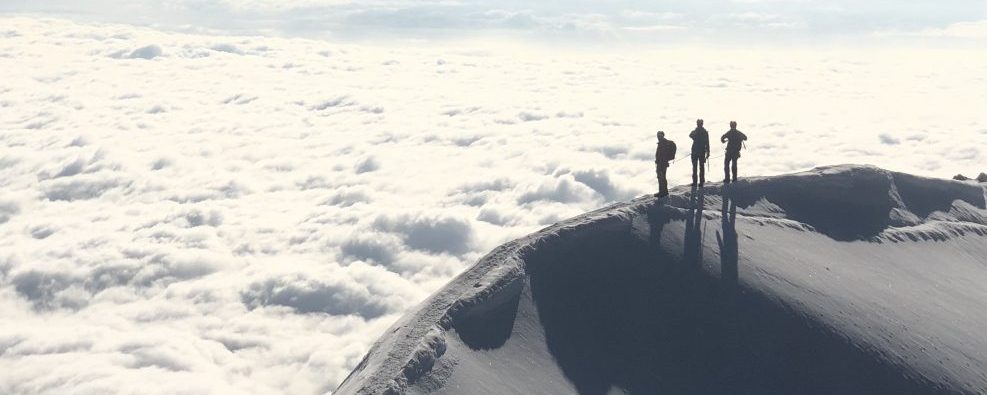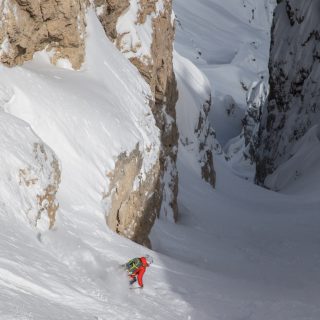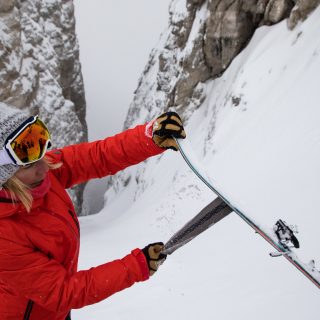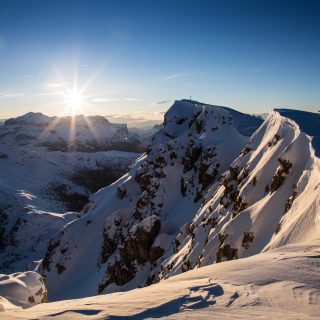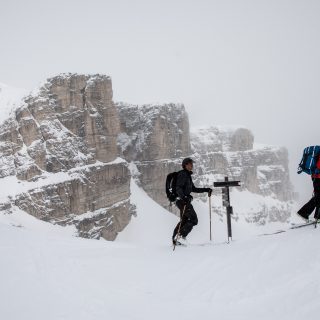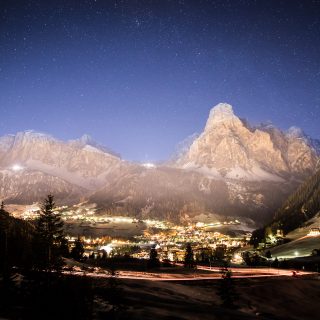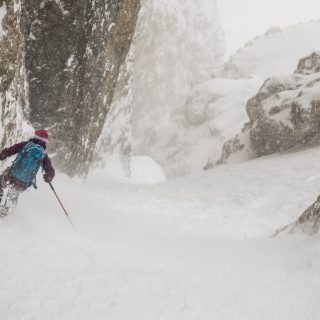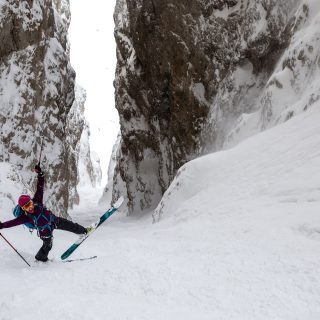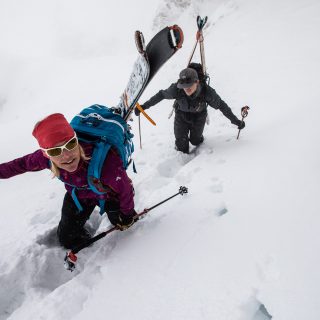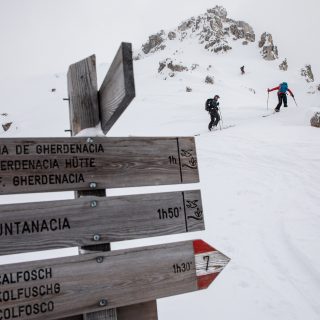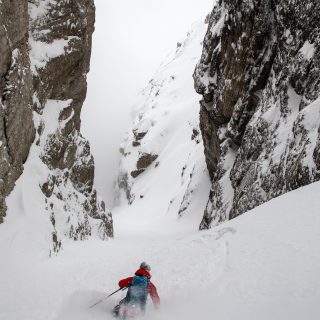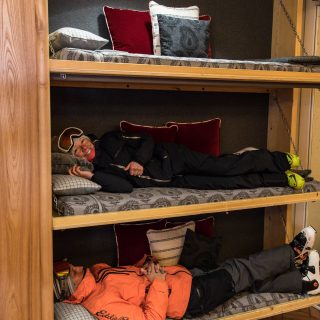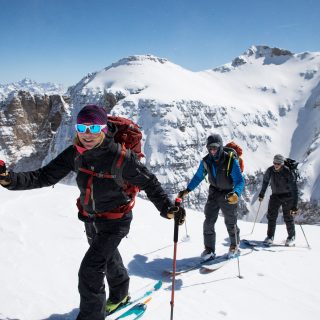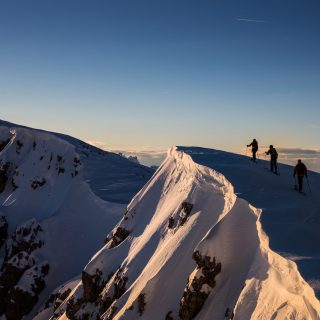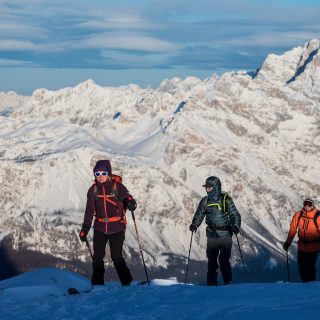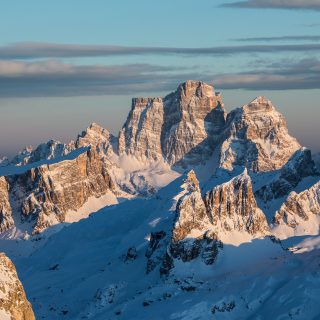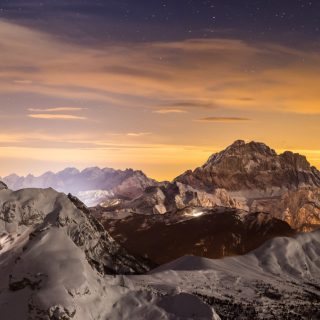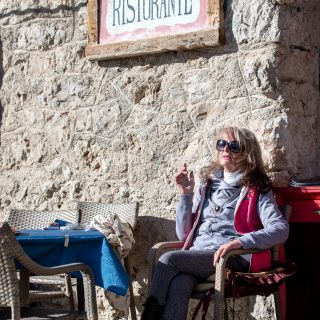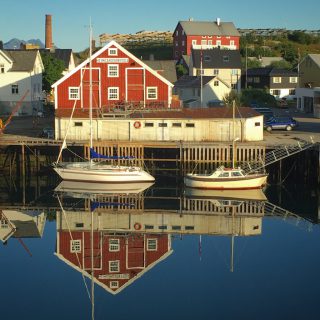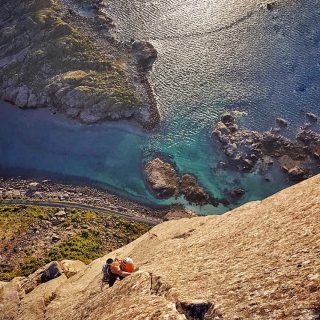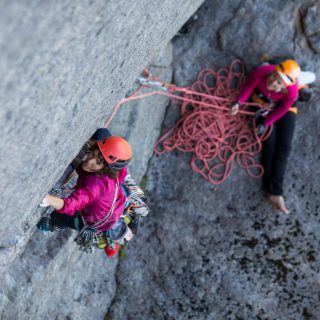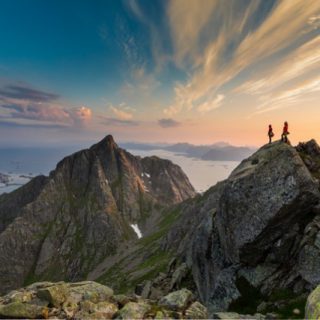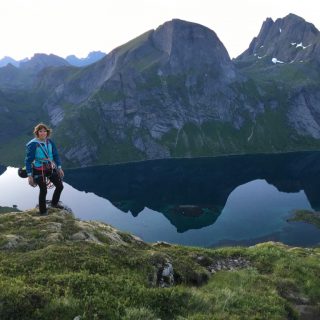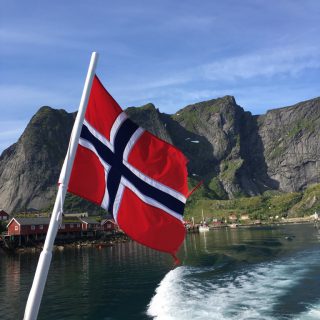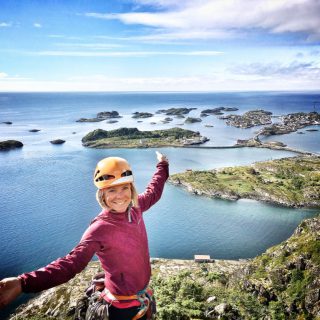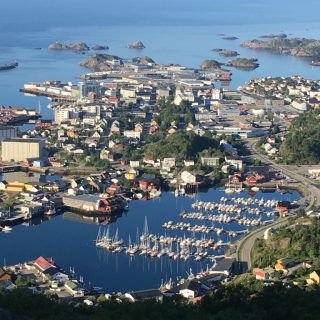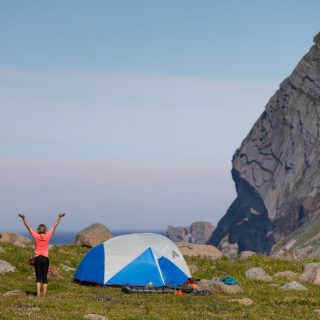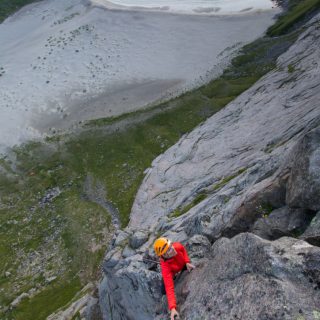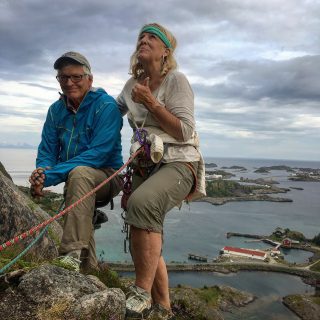THE URNER HAUTE ROUTE
THE SKIER’S HAUTE ROUTE
This Haute Route is the ultimate Haute Route with no crowds and long descents! That’s why it’s called the Skier’s Haute Route, with up to 1800m descents, linking two of the greatest free-riding meccas: Andermatt and Engelberg.
Itinerary
Day 1: Our tour starts in Realp and climbs to the Tiefenbach Hotel, where we will drop off our overnight gear before going for an afternoon ski tour up in the direction of the Chli Blienenhorn. We will review the use of the avalanche rescue gear you will be carrying. Stats: 1000-1200m ascent
Day 2: We will skin to the Albert Heim Hut. A short descent behind the hut takes us to the base of the ascent to the Lochberg. The ascent to the Lochberg is gradual and finishes with climbing up a gentle ridge to the summit. The 1300m long and steep descent to the Goscheneralpsee is magical, in and of itself, but the surrounding glaciers make it even more memorable. After contouring the dam, we will follow the road down to our well deserved rest at the Gasthaus Göschneralp. Stats: 1000m ascent and 1500m descent
Day 3: If we’re in luck, a taxi will drive us up the snowy road back to the dam. Our 1100m ascent to the Schinstock pass starts at the dam. This is followed by an amazing descent down to the Voralphütte. A steep ascent takes us up to the highest peak of the tour: the Sustenhorn (3505m). With the highest peak comes a long 1650m descent to Steingletscher – a stunning alpine pasture below the Sustenpass. Stats: 1250m ascent, 1650m descent
Day 4: A steep glaciated ascent takes us up to the highest peak of the tour: the Sustenhorn (3505m). There is the option of a shorter version by descending from the Sustenlimi pass as this is a big day with 1400m! The magical descent takes us down to the cozy Steingletscher hotel for a restful night!
Day 5: Our final day! The climb takes us to the Funffinger Stock. If conditions allow, we will have a nice steep descent down to the Wenden Glacier. A short skin back up to the Grassen bivouac will provide us with one of the most beautiful and longest descents in Central Switzerland, all the way back to Engelberg
Maps:
- 1:25’000: 1171 Beckenried, 1191 Engelberg
- Skitourenkarte 1:50’000: 245 S Stans, 255 S Sustenpass
Price: 1675CHF per person
Included:
4 nights in dormitory with half board
Not included:
Lunch food, drinks in huts, rental gear, transportation to and from the ski traverse
Requirements:
- Good skier
- Endurance: 5-6 hours tours plus breaks
Journey: Andermatt is one of the first ski resorts to have free-car days! So join the trend and ride the train to your trip!
Explore the Dolomites in Winter!
Ski touring in The Dolomites will steal your heart and soul and make you want to come back from more! I experienced it first hand!
The Dolomites are famous for their dramatic couloirs nestled between steep rock faces and for their amazing hut system, world class food and unique landscape of jagged ocre coloured peaks that contrast perfectly with the deep blue sky and pristine snow.
We will enjoy some beautiful lift access ski touring and descents down stunning features in the Dolomites during the first two days. And then head into the mountains for 4 days and 3 nights in huts to immerse ourselves in the backcountry and take in the wild beauty the Dolomites have to offer and enjoy some magical Italian food and hospitality.
This is your time to enjoy La Dolce Vita on skis with cappuccinos on every run and Italian aperitif to celebrate every day!
Get inspired by this video of a recent trip to the Dolomites: https://www.youtube.com/watch?v=2HqkEMOaBns
What is included:
- 6 guided days
- hotels with shared accommodation
- half board in huts
- lift passes: 2 days at Sella Ronda, 1 one way lift pass on the first day of the hut to hut trip
- transportation to the start of the ski tour and back to the hotel on the last day
Not included:
- transportation to the Dolomites
- gear rental (https://www.altabadia.org/en/info/sport-tony.html)
- lunches
- dinners in town
- lift passes not listed above
Price: 1950CHF with 5 people
Midnight sun rock climbing in Lofoten, Norway
Midnight sun rock climbing in Lofoten, Norway
The Archipelago of Lofoten, located 200km north of the Arctic circle, offers world class climbing on granite peaks rising abruptly from the sparkling blue waters of the Norwegian Sea. It is truly one of the most magical and unique climbing adventure you can experience! I was first in Lofoten for ski touring and was struck by the beauty of the rock and its landscape. Reality was even better than what I had foreseen: perfect cracks, routes of all lengths and for all level, breathtaking views to the surrounding sea, delicious food and beautiful and typical little villages.
Get a taste of what climbing in the midnight sun looks like in this beautiful movie we shot last summer during 10 days of perfect weather in Lofoten! Sjo Tarn.
Contact us to book your rock climbing adventure in Lofoten!
Ski touring around Tromso – Arctic Norway
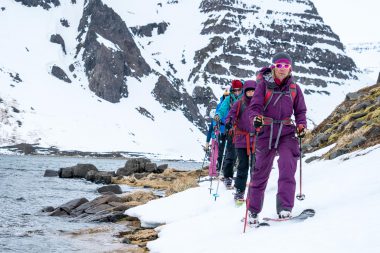 Tromso
Tromso
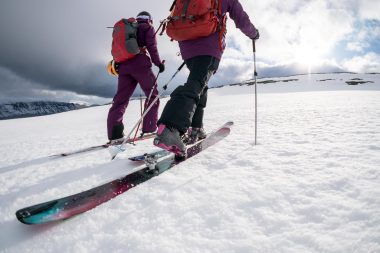 Tromso is a quaint little town of Northern Norway surrounded by beautiful summits that rise straight out of the sea. We will be based just outside of Tromso, on the island of Kvaloya, home to one of the most unknown ski paradise around and a boat ride away from another beautiful island to ski on, Senja. On snowy days, you can skin straight from the lodge. The higher you go, the more you can sea the beautiful curves carved out by the mountain side. The energy that stems from the sea to summit connection, the beauty of the landscapes and the endless daylight at that time of year are what keeps me coming back each year. It is the most beautiful ski adventure you can experience!
Tromso is a quaint little town of Northern Norway surrounded by beautiful summits that rise straight out of the sea. We will be based just outside of Tromso, on the island of Kvaloya, home to one of the most unknown ski paradise around and a boat ride away from another beautiful island to ski on, Senja. On snowy days, you can skin straight from the lodge. The higher you go, the more you can sea the beautiful curves carved out by the mountain side. The energy that stems from the sea to summit connection, the beauty of the landscapes and the endless daylight at that time of year are what keeps me coming back each year. It is the most beautiful ski adventure you can experience!
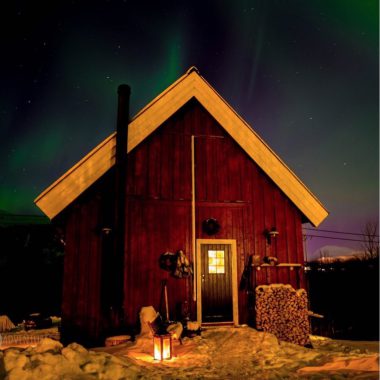
Lodging : Budeia lodge. We will share a beautiful and unique lodge with a hot tub, sauna and right on the ocean. One of my favorite typical coffee shop, Bryggejentene, is a 10minute walk way.
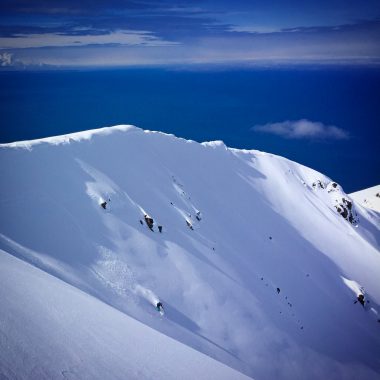 Cost: 2150chf per person. Included: transportation, lodging and 4 meals. Not included: alcohol, getting to and returning from Tromso, other meals.
Cost: 2150chf per person. Included: transportation, lodging and 4 meals. Not included: alcohol, getting to and returning from Tromso, other meals.
Laura Hill
Thank you so much for a really really awesome day out. It was fantastic. I loved every minute!
Brilliant. And thanks for the great photos.
I’m very excited about our next adventure.
Max
Dear Adam thanks for 2 Great days with you in verbier. I enjoyed the Tours very much. Hope to Join you next Winter Again . Greetings from Munich. Max
Dr. Christopher C. Kaeding
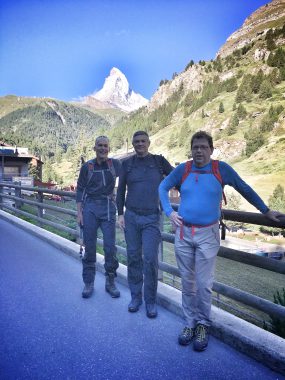 Adam and Caroline,
Adam and Caroline,
It was a great trip and as usual you two were phenomenal. We appreciate all your efforts to maximize our time and experience in Zermatt. Enjoy Norway and stay safe.
Thanks again,
CK
Tab and Anita
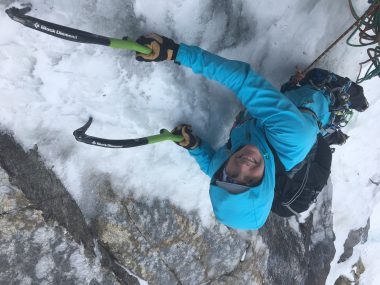 Caroline,
Caroline,
Thank you so very much for making this such an extraordinary experience for us. We appreciate your attentiveness, incredible expertise, and engaging personality – and hope to ski and climb with again with you! Anita and Tab
Marmolada
The Marmolada: Tempi Moderni

For married couples like Caroline and I, “dating” usually has an entirely different meaning. Throw in a child, and just the term “dating” itself is like a distant memory from some far-off land. All things considered, we get out a lot—individually. Most often it is for work (we’re both mountain guides), and we rarely get out and do things in the mountains together. Recently however, the stars aligned—read: babysitter, weather, work schedule—for my wife and I to get out for a classic climbing date. We had “gourmet” food, plus a “private room” all in a “romantic mountain location.” And yes, there’s a reason for the quotation marks.
We’d been talking over the summer about going to the Dolomites to climb the Marmolada, a limestone wall close to 3,000 feet high and stretching more than a half mile in width. It is certainly one of the most famous walls in the Dolomites and undoubtedly one of the great walls of the world. Our plan was simple on paper: Drive on Day One (8 hours) and approach the hut, climb Day Two, and drive back home on Day Three, hopefully in time for lunch?
Alas.
The long drive gave us time to flip through the topo and choose a climb. While our final decision would be based on crowds, we temporarily settled on a route: Tempi Moderni (“Modern Times,” 5.11, 900 meters). This route was established in the late 1980s by Heinz Mariacher, a name that many people, especially in North America, may not know—but almost every climber has worn climbing shoes he has designed. To be honest, I fell in the latter of the two categories, but this route is known by many to be “the line” on the face, and far from the easiest way up. I was a bit intimidated that I had worked too much over the summer instead of climbing, but it’s not every day you get a perfect forecast and a motivated partner for one of the great climbs of Europe.
After a long drive, it felt good to stretch our legs as we approached the Rifugio Falier. The climb starts about an hour from the hut and we hiked up and left some gear so we could find the route in the dark the following morning. Our gourmet meal, very important on any date, came next with polenta, wild mushrooms, sausage, wine—everything you would expect from Italy! Sleeping in a dorm room with a dozen other people wasn’t the romantic suite we had envisioned, but hey, the trip wasn’t over yet…

Getting up early the following morning, we were surprised to see not one, but two, teams up and gunning for the same objective. We made our way up in the dark and arrived at the base with one other team. Everyone was friendly but, of course, busy sizing each other up. The other team casually told us how they had just done the classic “Fish” Route (Via Attraverso il Pesce, 5.12b, 900m) only a week before, one of the harder routes on the face, onsight no less. They were ready quickly and asked if they could go first. We conceded and I was quite happy to let some “local” climbers find the way on the route, which was known to have some tricky route finding. They set out while the third team arrived. This team informed us that they would each be leading the first pitch of the route, which was technically the crux, this way they could both claim the “true send.” Why not, I thought, with 900m of climbing you might as well get a good warm up…
While the first team climbed, I was busy making my own mental calculations. The locals had a piton hammer and packed an … ice screw? The ethics police had high performance shoes and was planning on running laps on the first pitch. And here we were, the middle-aged couple, parents, and I was wearing shoes marketed for beginners. Somehow, despite more than 20 years of climbing experience, I was feeling a little out of place. I even quietly suggested that perhaps we go for a different route, but it was too late. The second climber was already starting so it was my turn to go.
Once on the rock I regained my confidence, despite a quick pull on a piton that unfortunately I think the other climbers witnessed, and soon enough I was at the anchor with the first team. Our timing was good and soon I was heading up pitch two. Luckily, the pitch traverses a lot because as I was climbing, the first team dropped their pack. It was very close to hitting us, but the unfriendly “whoosh” of a falling object put me on my toes. If I wasn’t awake after the first pitch, I was now! The team, rather proudly I thought, decided they would go down and retrieve the pack then continue. I immediately thought: Great, now I get to route find.
I figured we wouldn’t see this team for a while as they lowered down off the route to retrieve the pack. We climbed a couple of pitches only to look down again and see the original team back on our heels! In some ways this helps motivate you to move a bit faster, but I was really hoping they would catch us and take over the route finding. Nonetheless, we made good progress and they stayed just behind. They were a friendly group and our timing worked well. By the time their second was arriving at a belay our second was climbing.
The pitches cruised by offering some exceptional climbing and positions. In 27 pitches of climbing there are a number of fixed pitons, but no bolts were placed. It may not sound impressive, but remember it is not a granite crack climb. The line follows natural features, but tackles some bold, steep, faces with seemingly little for holds—let alone anything to hold gear.
As I mentioned, I didn’t know much about Heinz Mariacher, the first ascensionist, but I know a bit more about him now. He was one talented rock climber, bold, visionary and had a strong feeling for clean climbing ethics. What I loved about this route most was although it has been done probably hundreds of times, there is still a lot of adventure to be had. The line is hard to find at times and there is not enough fixed gear to show you the way always. You still need to commit to moves, often unprotected, to see if you’re going the right way. There was, at times, some uncertainty—only a fraction of what the first ascensionists experienced, but these moments really make a climb stay with you for a long time.

As the day pressed on it was obvious that we would not make the last cable car down, but we wouldn’t get caught out in the dark, either. The last few pitches are quite steep, with poor belay stances and the gear is often quite spaced. These pitches seemed to take longer than they should, but we arrived at the summit of the feature to catch a bit of remaining sunshine before setting out on the descent.
You have three options for the descent of the Marmolada. One, you make the last cable car, which for $20 transports you effortlessly back to your car. Two, you bivy in an emergency shelter in the station and wait for the first lift, which comes up at 9:00 the following morning. Three, you hike down the glacier in your sneakers to the pass, and hitchhike back to the car, which takes about three hours. To be honest, we hadn’t given much thought to the descent and figured we would just improvise. While option two was quite inviting, we still had some daylight left and thought we would just walk back to the valley and maybe get a hotel room to finish off our romantic date.
If you have ever been in a situation where you make a decision and quickly realize it was the wrong one, but you’re too lazy to correct your error, you might understand how we felt. The snow was in the shade and starting to refreeze, making the descent very delicate if you were, say, wearing sneakers. If that wasn’t bad enough, the snow soon disappeared and we were left to navigate hard glacial ice just in time for darkness to set in. The locals had told us an ice screw was necessary to get off the glacier and finally I was starting to believe them. Before one of us got hurt, we decided it was time to throw in the towel. There was a mid-station lift that we could traverse to and I had seen “Rifugio” labeled on a map. We would cruise over to this hut, spend the night and then take the lift down in the morning. With any luck, the food would be as good as in the hut where we’d stayed the night before!
Perhaps at some point there was a “Rifugio.” Or maybe “Rifugio” had a different meaning than what I am accustomed to, but we never found a hut when we arrived at the mid-station. What we did find was the wind. And, oh, did it howl. Considering how light we had packed, it was shaping up to be an interesting evening—a far cry from some chic Italian hotel that we had envisioned. The term “epic” was starting to come to mind, but we were thinking of two other teams that we saw on a different route on the face, who were a long way from the top and our situation didn’t seem too bad.

The lift station was locked up tight, but we did find enough space to crawl under a door into a run-down garage that housed a snow cat and some other heavy machinery (the north side of the Marmolada is a ski resort in the winter). I uncoiled the ropes and made a nest for us on the dirt floor, which promised to be uncomfortable at best.
Fortunately, my wife is smarter than I am and checked to see if the snow cat was unlocked. Luckily for us, it was and there you have it, our fine private Italian accommodation. We tried to convince ourselves that it was like sleeping in a plane, but I was quick to point out that it was going to be a long flight since we had more than 12 hours before the lift station opened in the morning! One thing I learned is that the seats on these machines are not designed for comfort, presumably so drivers at night are not prone to fall asleep. Nonetheless, we were protected from the wind. Things could be worse.

At first light the following morning we emerged from our honeymoon suite to get some sun on the south side of the station. We were joined by one of the other teams on the route who had spent a few hours trying to get off the glacier during the evening only to be thwarted by the last couple hundred feet of steep ice. They had spent the night trying to keep a fire going in some run-down shack close to where we were. We had some laughs and enjoyed the sun’s warmth after the chilly evening. When the lift opened we made it down to the car, and without pause started the long drive home.
Nice Italian meal: check. Private accommodation in a romantic setting: check. Unforgettable adventure: check. Not to mention some quality time doing what we love to do. All in all, it was a getaway that neither of us will forget for a long time and we managed to fit in all the criterial ingredients for a successful date. I would like to say that next time we’ll just check into a nice hotel by the beach for our romantic getaway but, more likely, there will be another adventure calling.
Outdoor Research “Uberlayer” Jacket
If you are looking for an awesome insulating layer that wi
 ll keep
ll keep
you warm, breath and work alone as an
outerlayer as well, look no further. I got to use this jacket last season and it is great. The days of wearing simple fleece insulating layers are over for me! The Polartec “Alpha” fabric in this jacket does an awesome job of breathing, retain it’s warmth when wet, blocking the wind and looking good around town too! This jacket is right at home using ski touring or ice climbing.
Choosing the right boot
Since a lot of work I do involves Alpine objectives and summertime mountaineering, I get a lot of questions regarding what type of boots to buy. Without exaggeration I spend at least 200+ days a year in mountain boots and ski boots and most of my clients are wearing boots as well. Therefore, I have a good sense of what works and what doesn’t and I’ve seen a more than a few people spoil their trip due to poor boot choices. With that said, below are a few questions to ask yourself and a few tips when thinking about choosing the right boot for your climbing desires.
1. Fit Forget about colors, price tags or any brand loyalties you may have. If your boots don’t fit well it can seriously jeapordize your success on any objective. It’s best to take the time to find a good fitting quality boot initially as it will save you in the long run.
2. Single vs. Double These days most single boots are warm enough and stiff enough to excel during four season. However, if your trip involves camping double boots are still a good choice as you can dry out the liners. My personal favorite is the Scarpa Omega – super warm, affordable, lightweight and rigid making it a good choice for technical climbing
3. Size It is always easier to take up space in a boot than make them bigger. I rarely hear someone complain that a boot is too big, but regularly hear people complain their toes are banging. Also, your feet swell at altitude and leather boots can shrink over time with exposure to water (at least that is my experience…?). When in doubt get the extra size larger, your feet will thank you for it
4. Flex What are your objectives? For ice and a lot flat footing mountaineering terrain, go with a rigid boot. If your goals are more scrambling related or you need a boot for an approach you’ll be happier with a more flexible boot. For example: on the Matterhorn the Scarpa Triolet is great, but on Mt. Rainier go with the Phantom Guide.
5. Insulation When will the boot be used? No need to get a warm boot if you’re only using them in the summer to cross glaciers in the Bugaboos. Likewise, it is bad form to get frostbite in July on Mont Blanc because you’re using a boot with no insulation. Think about what seasons you are will be using your boot and choose accordingly. Remember it is always better to have a boot that is too warm than otherwise.
6 . Crampon compatability One thing to consider when buying new boots is what type of crampons you own. A lot of semi-rigid boots will not take a step in binding crampon which may require you to purchase another pair of crampons… Just food for thought when making a new purchase.
My boot picks:
Ice and Winter Alpine: Phantom Guide and Omega
Summer Alpine: Triolet (more scrambling oriented) and Jorasses (ridgid)
Lightweight for Approaches: Charmoz, Rebel or Maverick
BlueWater 9.1 Icon Rope
I’m tied into a rope at least 250 days a year so I feel I have a good sense on what works and what doesn’t. Generally speaking a skinny rope will be lighter, handle better, have a lower impact force (which is great for climbing above marginal gear – like ice screws), but be less durable then a larger diameter rope. The main complain I hear over and over is that skinny cords, ” just don’t last.” This shouldn’t be a surprise and often it is best to reserve those small diameter ropes for redpoint attempts, alpine routes, or higher end climbs where weight really matters. Well, meet the 9.1 Icon from BlueWater. For me, this is the most durable rope in it’s class. I have done my best to beat this rope up and it is still going strong and I can’t say that about a lot of skinny ropes I have used over the years. The tightly braided sheath gives great durability without making the rope feel like a cable. So, if you’re looking for a new skinny single rope I don’t think you will be disappointed with the 9.1 Icon!
